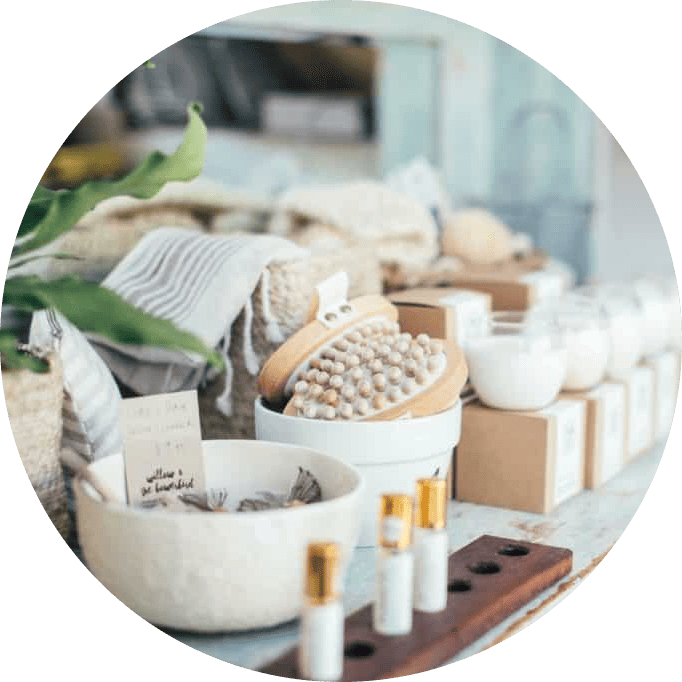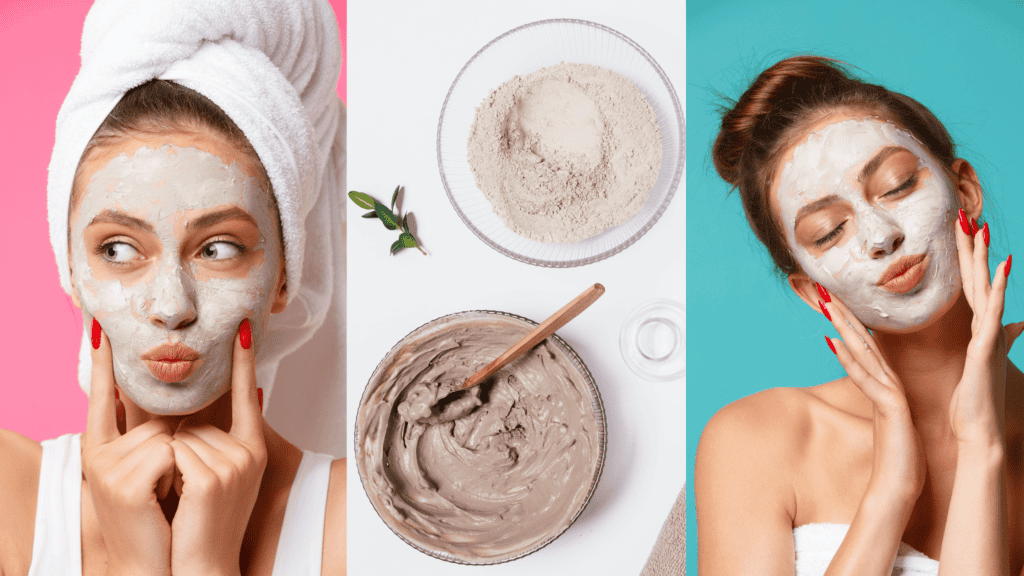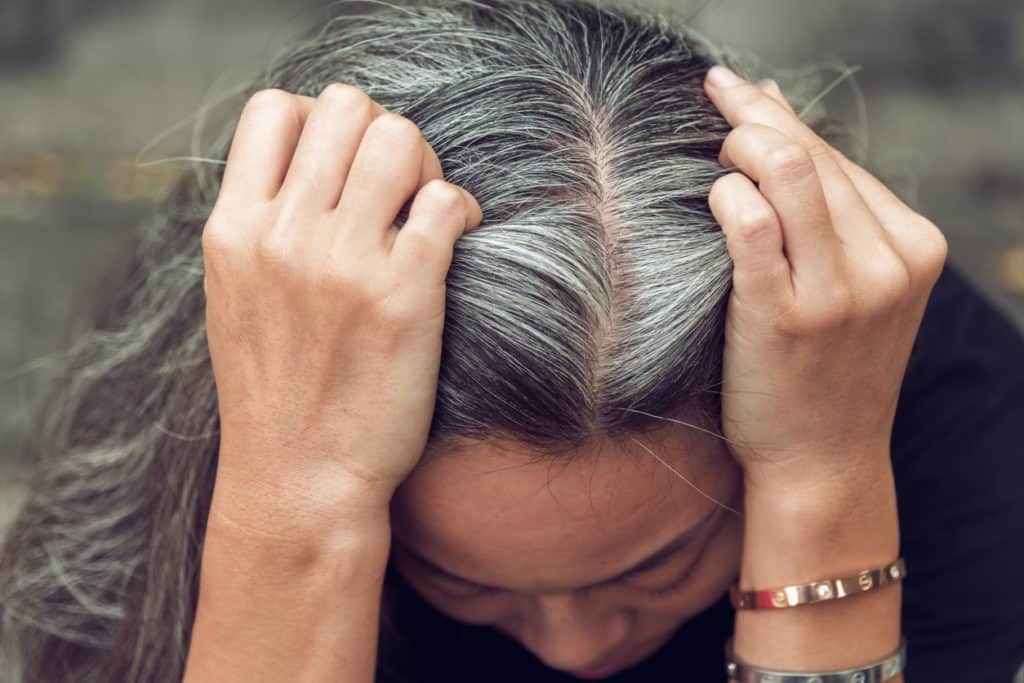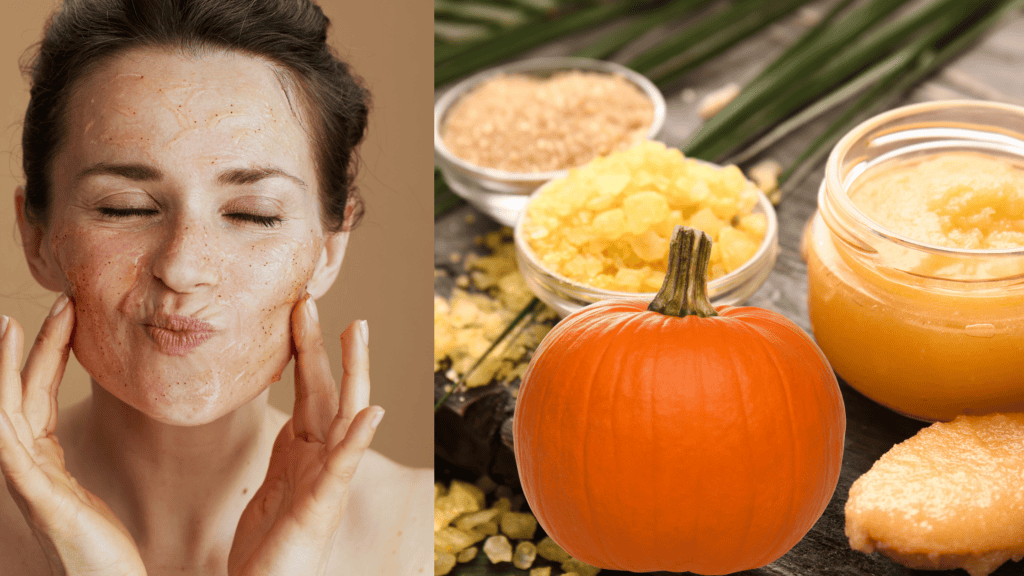Clay is fantastic for treating and beautifying the skin. It has been used for centuries for its therapeutic and healing benefits and is an essential ingredient for detoxifying the body internally and externally.
Clay is abundant, easy to use, and requires minimal processing; one of the best things about it as a beauty ingredient is that it is as natural and close to nature as possible and has many purifying benefits.
Clay was used as an antiseptic, packed around wounds, and in mud baths and therapies. It was first recorded in Mesopotamia in 2500 BC and used by Romans and Egyptians for inflammatory and intestinal problems, as it draws out toxins. Cleopatra is even said to have used it to enhance her complexion in her iconic beauty ritual.
Making face masks is one of the most common ways to use clay today for beautiful skin. It is fantastic for pulling dirt, debris, and oils from the skin, unclogging pores, and helping to clean and clarify your complexion. If you have oily or problematic skin, this is your ingredient!
How can you use cosmetic clays for skin care? Try these DIY clay face mask recipes!
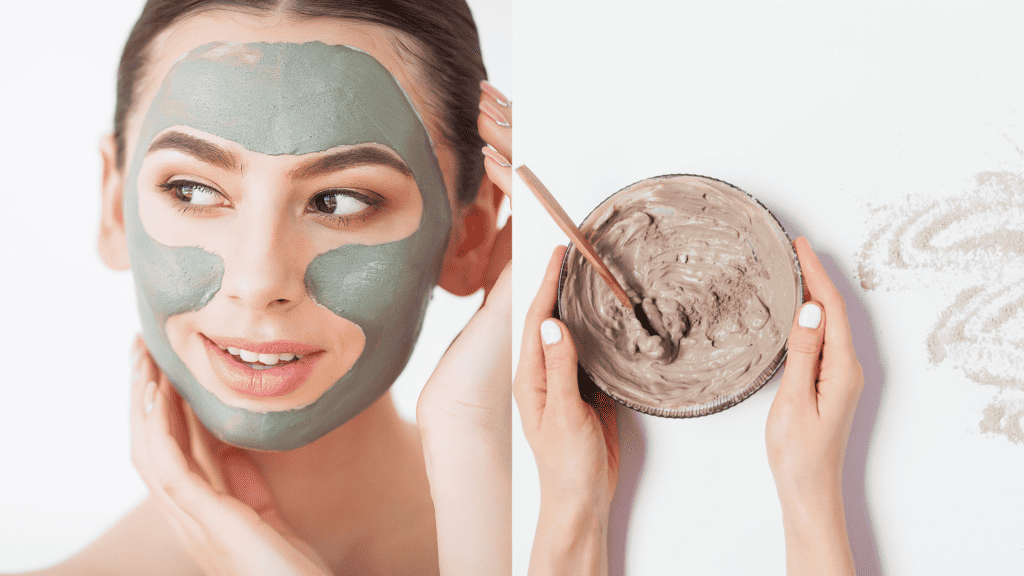
What Is Cosmetic Clay?
The type of clay used for cosmetic use comes in various powder forms; Clay swells in water and is highly absorbent. It can bind to toxins and impurities, like dirt and oil, and pull them out of the skin and hair.
Clay is formed when soils, volcanic deposits, and silicate rocks are affected by climate and weather conditions, producing many minerals deposited together to form clay.
There are around 75 different minerals in the Montmorillonite clays, and the most common minerals in clay deposits are silicates, iron, aluminum hydrous oxide, and mica.
The various clays have been used for centuries to cleanse and nourish skin and hair, making it a beneficial, natural product to add to your routine.
What Are The Best Cosmetic Clays For Your Face?
You can mix and match the clay you use for your skincare. All have detoxifying properties, although some are more suited to dry, oily, or sensitive skin.
Bentonite Clay.
- Bentonite Clay* is a highly absorbent clay named after Fort Benton, Montana. The most abundant source of his type of clay is found here because of its numerous volcanoes—a versatile clay for face and hair masks. Suitable for all skin types, this clay is often the best one, as it has so many uses.
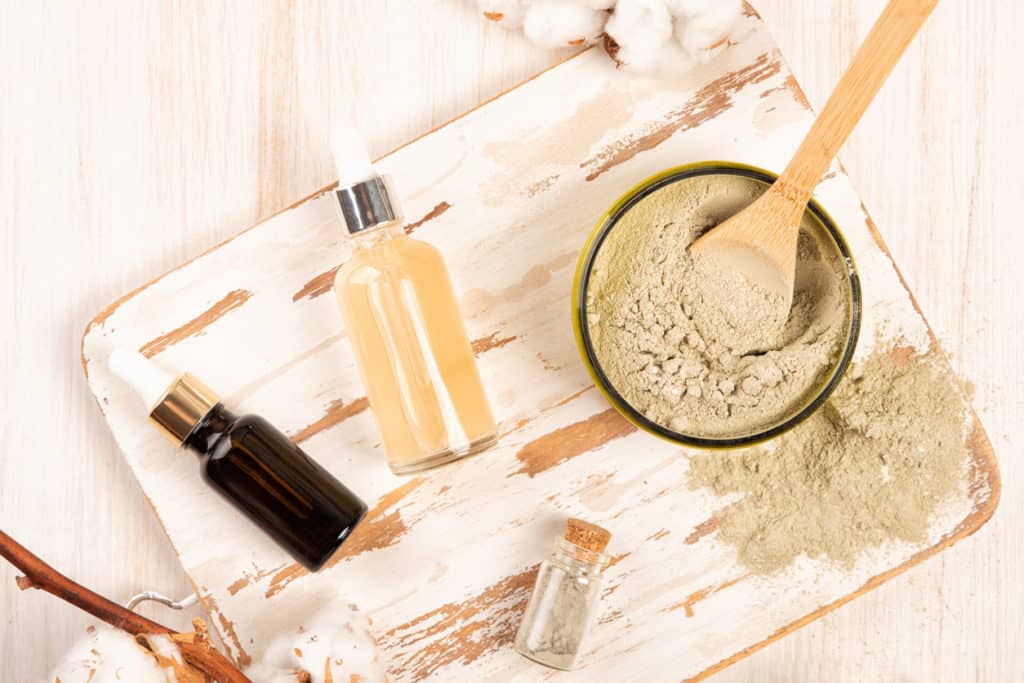
Make a Bentonite clay face mask for problematic skin and acne with this recipe!
White Kaolin Clay.
White Kaolin Clay*, often known as white clay or China clay, is a fine, light, versatile clay suitable for sensitive skin. It forms in wet, humid conditions, including in the USA.
Make a White Kaolin clay face mask for sensitive skin with this recipe!
- Pure white Kaolin Clay with a very soft, fine texture. Fragrance free.
- Mild and pH neutral. Great for dry and sensitive skin. Calms inflamed and irritated skin.
- Detoxes and clears pores. Absorbs excess oil. Gently exfoliates.
Rhassoul Clay.
Rhassoul Clay* is often known as Ghassoul Clay or Moroccan Clay. Named after the Moroccan word Rhassala, meaning to wash, it comes from Morocco’s fertile mountainous regions. It has been an ingredient in numerous beauty applications for thousands of years.
Make a Rhassoul clay face mask for all your anti-aging needs with this recipe!
French Green Clay.
French Green Clay is a highly absorbent and effective clay with a micro molecular structure; it quickly pulls toxins, impurities, dirt, and oil from the skin, making it suitable for blemished, problem skin. It naturally occurs in France and comes from China, Montana, Wyoming, and other parts of Europe. It gets its green color from iron oxide and decomposed plants.
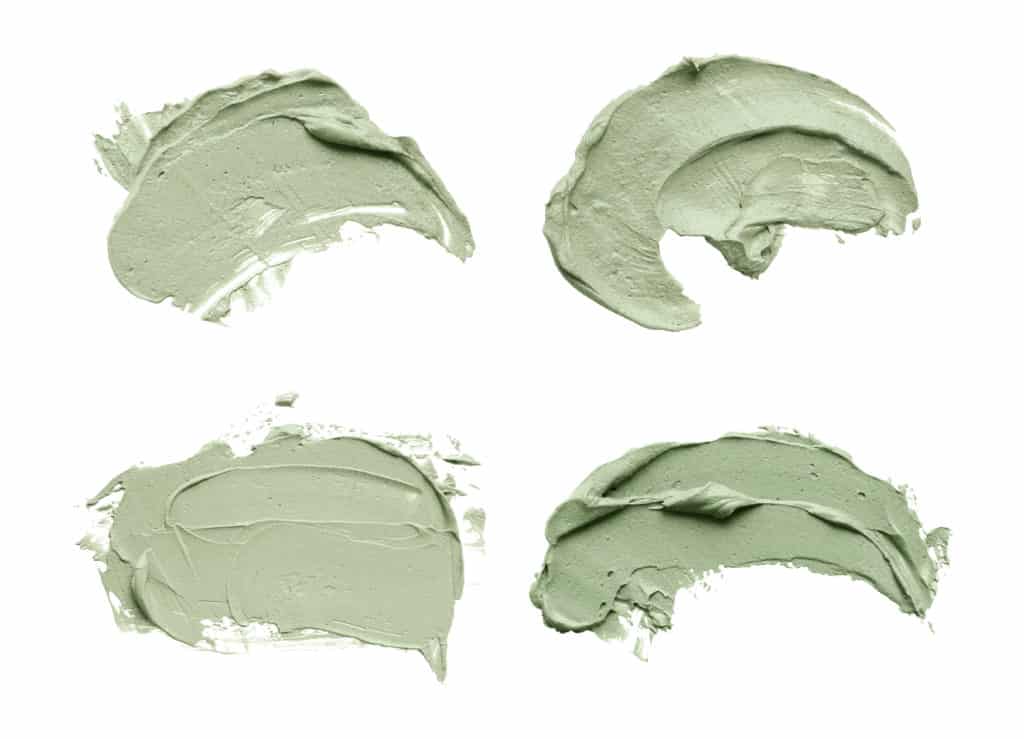
Make a French Green clay face mask for skin problems with this recipe!
- ★ 𝐊𝐄𝐄𝐏 𝐓𝐇𝐄 𝐒𝐊𝐈𝐍 𝐇𝐘𝐃𝐑𝐀𝐓𝐄𝐃: It naturally contains essential vitamins and essential fatty acids that keep the skin hydrated. You can use this on your entire body (avoiding the eye area) and you will get amazing results.
Fullers Earth Clay.
Fullers Earth* consists of clay minerals such as bentonite, attapulgite, and kaolinite. Clay is a clarifier and cleanser and an active and inactive ingredient in cosmetic products. Known as the whitening clay, it is a well-known treatment for hyperpigmentation. Most of Fuller’s Earth comes from The USA, Japan, Mexico, and England.
Make a Fullers’ Earth face mask for hyperpigmentation with this recipe!
The Beauty Benefits Of Clay For The Skin!
Cleanse and Clarify.
- Clay is very soothing and effective for acne-prone skin problems. Its ability to gently bind to debris on the skin makes it an ideal mask. Add water and mix into a paste; leave for 20 minutes. Clay clarifies the skin, deepening the pores to remove oils and dirt. Make a gentle wash with a more watery paste to remove surface dirt quickly.
Detox.
- Many recorded historical texts refer to using clay taken internally to relieve gastric issues. It works in the same way externally by binding to and removing toxins. Clay makes a tremendous underarm detox, especially if you want to transition to natural deodorants or a safe way to remove bacteria buildup. Please seek medical advice before ingesting clay to ensure it is secure.
Anti-Aging.
- Clays’ ability to bind to toxins means it can help speed up skin regeneration and renewal by sweeping away old skin cells, leaving a more transparent, rejuvenated complexion.
Anti-Inflammatory.
- Clay has antiseptic and anti-inflammatory properties. It makes a soothing bath to calm eczema and psoriasis skin conditions. Add a cup of clay powder to bath water and soak for up to thirty minutes.
Exfoliate.
- Clay, especially Bentonite clay, makes a beneficial mask for the skin on the scalp that detoxes and exfoliates it. How to use it? Mix clay with water or Rosewater into a mud pack, apply to the scalp, and leave it on for twenty to thirty minutes. Doing this four to six times a year will rid the scalp of weeks of product buildup and excess oil and dirt.
Nourish.
- Nourish. Clays’ large and varying mineral content, like calcium, magnesium, potassium, and iron, are absorbed by and beneficial to the skin and body.

How Do You Use Clay In Your Skincare Routine?
Using clay for the skin is very simple. The white Kaolin Clays and the French Green clays are delicate, soft clays suitable for sensitive skin and make a good starting point. Experiment with different clays and even mix them to create a custom treatment.
Clay Face Wash.
If you don’t have time to make a face mask but want some of the clay’s benefits, make a more watery paste for a quick wash. Add a tablespoon of clay to enough water to make a thin paste; use this as you would soap, rubbing all around the face, then rinse off.
Clay Face Mask.
Use one to two tablespoons of clay powder for a leave-on face mask. Mix filtered water or a flower hydrosol into a paste thick enough to stick to the skin.
Use glass, plastic, or wood implements, as metal affects the clay’s charge and is less effective.
Apply to a clean, damp face, applying in thin layers. Leave the clay on for between ten and fifteen minutes. The longer the clay is on, the more potentially dry it will leave the skin. DO NOT LET THE CLAY MASK DRY FULLY.
Let the clay’s mineral content nourish your skin by allowing it to start to dry; it will tighten the skin, stimulating blood flow and leaving a firm, taut effect without thoroughly drying the skin out.
Clay Body Scrub.
Clay is fantastic for use as a body scrub. Mix three or four tablespoons of clay with two tablespoons of sea salt. Dead Sea salts* are excellent because they have many mineral benefits. Mix with water to make a paste, and apply all over your body as you shower or bathe. Rinse off for silky, clean, exfoliated skin!
How To Remove A Clay Face Mask?
Remove with a warm, damp washcloth, press to the face, and leave it for a few minutes to loosen the clay before gently rinsing off. The skin should feel firm and refreshed, and any redness should gradually lessen over the next few minutes.
Hydrate the skin with a soothing natural oil, like Argan or Jojoba. What are the best face oils for the skin? Try these in this post!
Clay is a natural, gentle, and versatile product for men, women, and children. It is a fun and slightly messy way to use the natural world in your beauty routine! Mix different clays and use hydrosols or water to make numerous DIY beauty recipes.
The Best Clay Beauty Products!
Look for Clay in natural beauty products; try some of these to get inspired by the types of products available!
- A natural and organic clay face mask skin care product to hydrate, shrink pores, and remove blemishes, acne, oil, and impurities.
- NATURALLY BEAUTIFUL: Let your natural beauty shine through by clearing away blackheads, dead skin cells, and dryness naturally. We’ve left out all the junk and included only the highest quality natural and organic ingredients in our face mask. Like everything we make, our hydrating mask is cruelty free and made in the USA.
- HIMALAYAN GREEN TEA AND GREEN CLAY MASK: a rinse-off mask with natural green tea and clay ingredients to clean and purify the skin deep at the pore level, leaving your skin refreshed and revitalized. Perfect for use on both face and body.
This post contains affiliate links marked with a *; if you purchase through these links, we may earn a small commission, which will not affect your sales.
Glowitgreen.com is a member of the Amazon affiliate link program.
